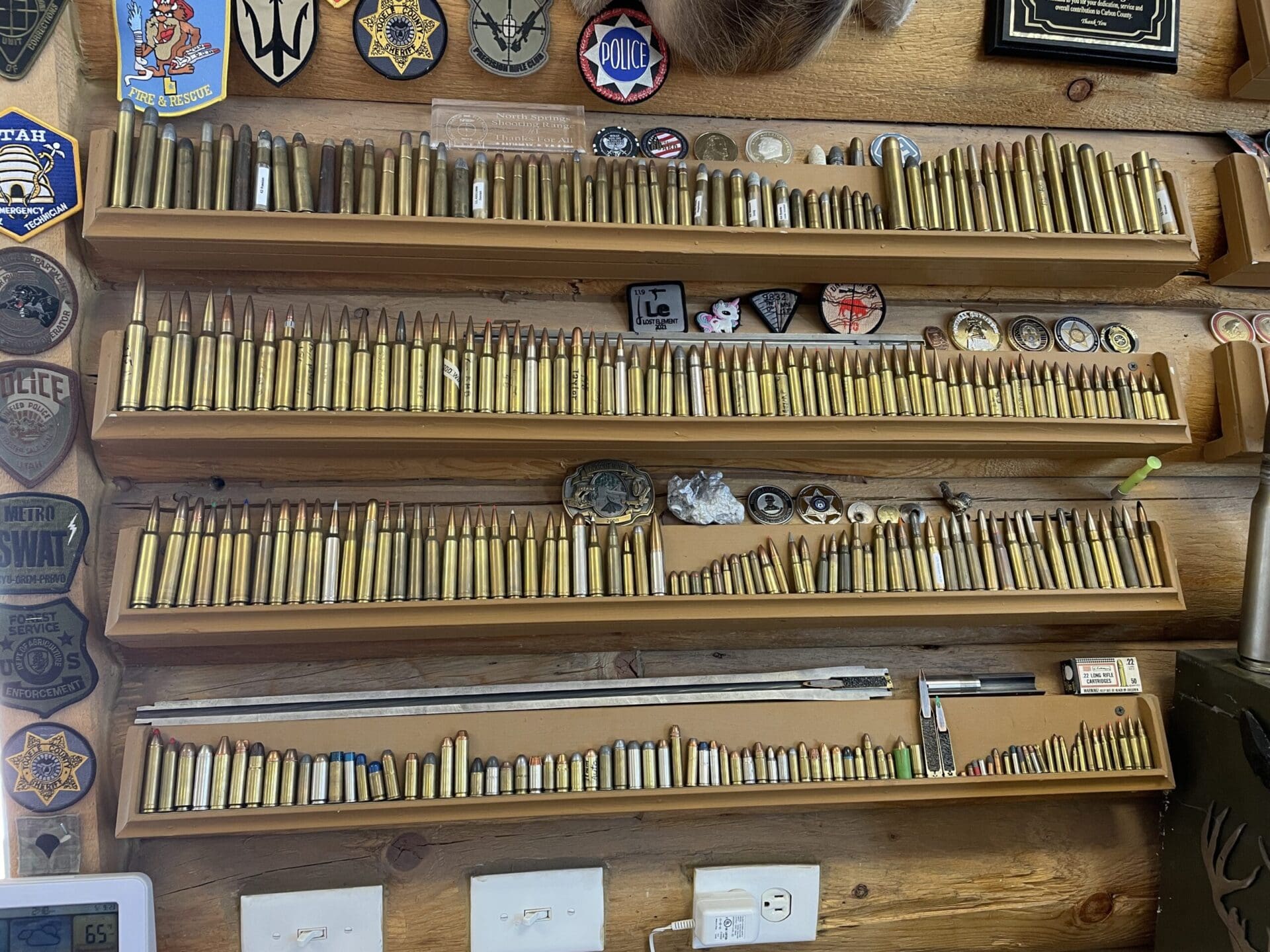
Yes, there are a lot of bullet sizes and it can be confusing. We call them “calibers,” except for shotguns, which are referred to as “gauge” or “bore.” Each is different and — just as with anything else — each has certain attributes that are beneficial for certain purposes…and its own drawbacks when the same caliber of cartridge is used for a different purpose.
How a round’s caliber is determined is usually from the diameter of the bullet (meaning the projectile at the end. That’s the thing that goes out the barrel when the gun goes bang or, in the case of metric rounds from one of them communist countries, the diameter of the bullet and the length of the case.
In days gone by, the measurement was taken from the diameter of the neck or base of the cartridge.
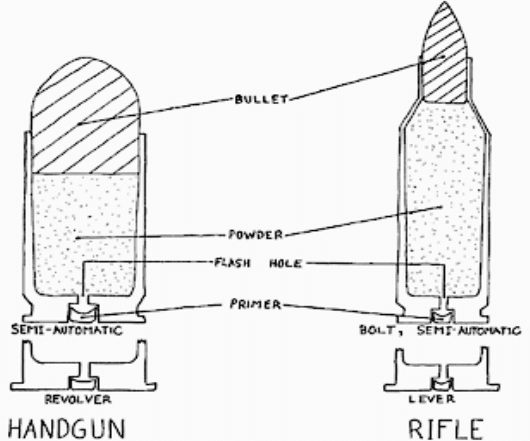
So, 9x19mm uses a 0.355-in (better knows as 9mm) diameter projectile (bullet), and the case is a hair over 19mm long. Ergo, the 9x19mm cartridge
The .38 Special, created back when ammo makers measured the neck, uses a .357-in diameter projectile but the cartridge case is .378 inches in diameter at the neck and base of the case. The .357 Magnum cartridge is named for the .357-in diameter projectile.
Rifle cartridges largely have the same conventions; metric or English measurement of the diameter of the projectile. Some, such as 7x57mm Mauser, use the European measurement of “bullet diameter” x “case length.”
Gauge or bore of a shotgun is measured in a wholly funkier manner. How those are measured is how many lead spheres the same diameter of the barrel would make 1 lb of lead. In the case of 12 gauge, twelve of them. In the case of 20, twenty and so on. The only exception is .410 bore, which is the diameter of a slug fired from a .410 bore shell. The shell is actually 0.455 inches in diameter, which makes it a .45 caliber shotgun.
So, now you can look at a cartridge name and get an idea as to how big it is. Let’s go over some common cartridge sizes and what they’re good for.
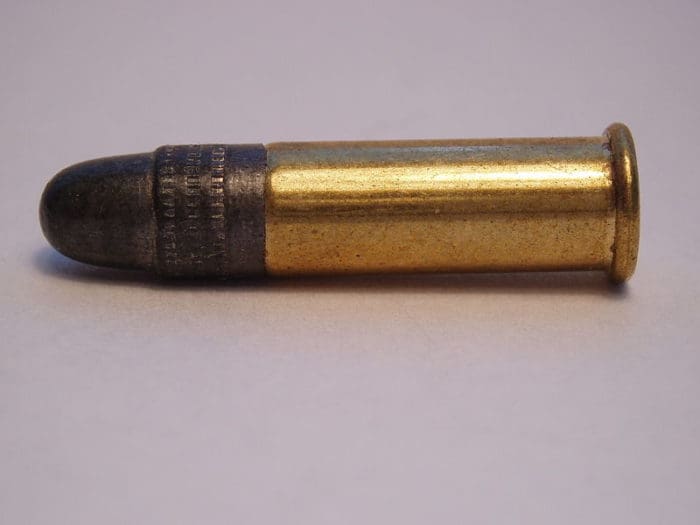
While it has been successfully used for self-defense (actually, more people die from .22LR wounds than any other caliber, but that’s just because way more people are shot with one than any other caliber) no one in their right mind would recommend you do. It’s also ridiculously cheap.

While .380 ACP is lacking in almost every category compared to 9mm, it offers just enough velocity and energy to be useful for self-defense. Its small dimensions and low recoil make it popular for carrying in micro pistols.
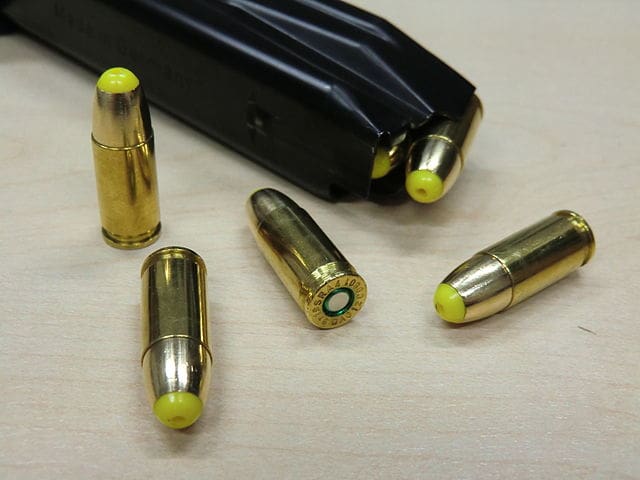
While light on alleged stopping power, 9mm is considered the bare minimum for self-defense rounds. The FBI famously poo-pooed the 9mm due to failure to stop bad guys (such as in the 1986 Miami shootout) but it’s come a long way since then and modern ammunition has made it more than just adequate. It’s now the agency’s standard issue.
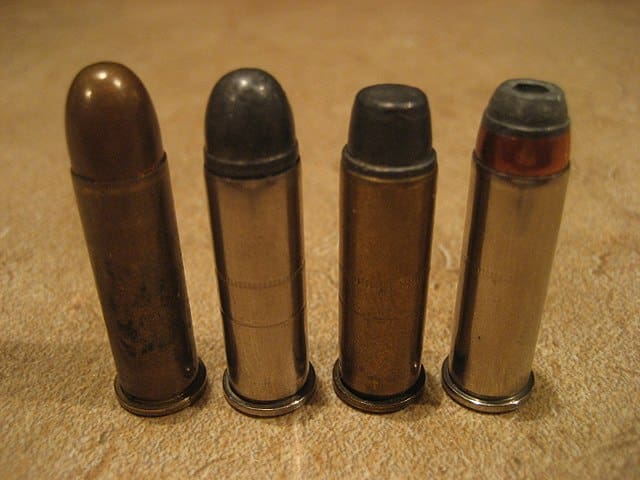
However, it’s highly accurate and laughably easy to shoot with a medium-frame revolver. Appropriate ammunition selection makes it very viable for self-defense, particularly when using hollow points. These attributes made it the default police round from the McKinley administration well into the 1990s.

What they created was the .357 Magnum. A 158-grain semi-wadcutter bullet in .38 travels at a slow-ish 800ish fps. The .357 Magnum dials it up to over 1200 fps.
Good for target shooting, exceedingly effective at self-defense (a great many police officers carried it) and also decent for handgun hunting of small(er) game, it’s one of the great all-arounders. The .357 round, however, best shot from medium-frame revolvers, as recoil in a smaller gun is almost irredeemably punishing.
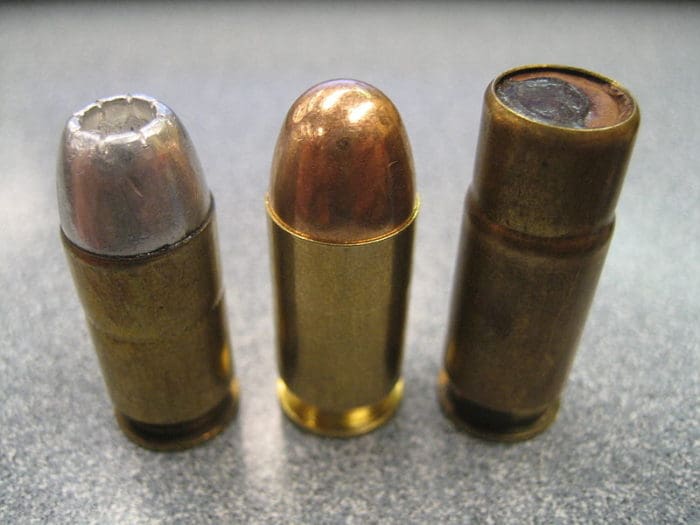
The .45 ACP is very accurate and has decent-ish energy on impact. It’s great for target shooting and competition where the power factor matters and is a proven self-defense round. It isn’t shockingly powerful, though; it’s just big with plenty of bullet weight. Don’t be fooled by caliber junkies in the comments; it’s barely any more effective at self-defense than 9mm. However, if you insist on a big bullet, it’s the easiest of the big boy calibers to shoot.
Now onto rifles. Today’s rifle shooter is frequently a tactical junkie, even though they probably have an office job. Ergo, the more common calibers and bullet sizes of yesteryear (long-action rounds like .270 Winchester, 7mm Remington Magnum and the best cartridge yet invented by man, .30-06) are almost unknown to them.
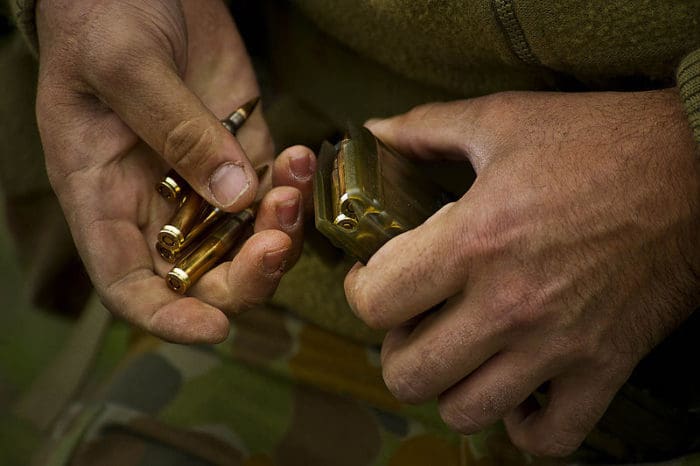
The militaries of the world use it because it’s accurate and effective on hostile personnel out to 300 meters or so, but also because it’s cheap and easy to shoot.
In the civilian realm, it’s great for target shooting, varmint hunting and also dealing with small four-legged pests (coyotes, for instance) but is a piss-poor hunting round (at best) for anything larger. It’s effective for self-defense, but load selection is critical as over-penetration (bullet going through the bad guy, the wall behind them, and into your neighbor’s house) is a serious concern here.
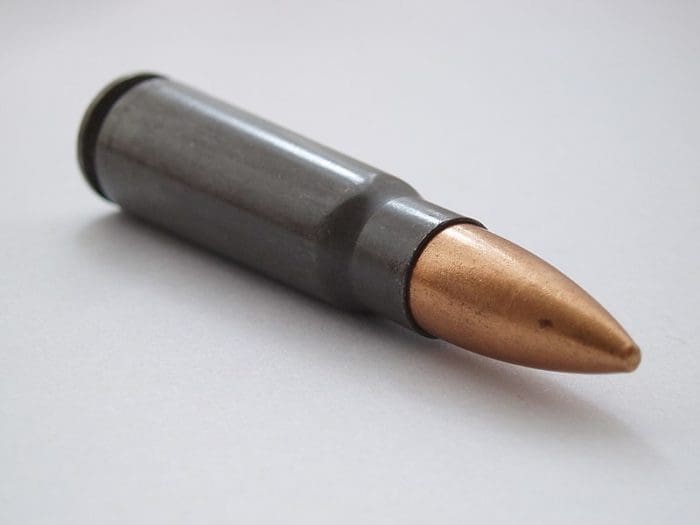
The 7.62mm round is broadly equivalent to the .30-30 Winchester in terms of muzzle energy, trajectory and velocity, carrying more “oomph” than .223 but at the cost of slightly more recoil.
It’s decent for hunting at short range (just like .30-30) and you can shoot a lot of cheap surplus ammo for not a heck of a lot of money. It’s good for personal protection against two-legged critters; a whole lot of people are dead from being on the wrong end of an AK. However, load selection (expanding or frangible rounds are a must) is likewise critical.
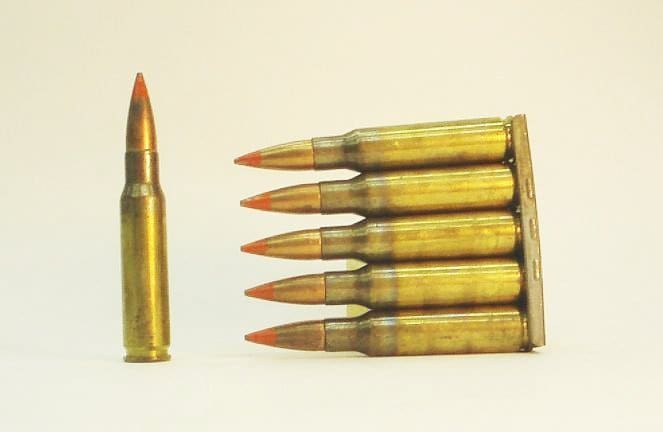
This round has longer legs, with flatter trajectory and plenty of retained energy out to about 600 yards for both hostile personnel and critters you want to put in your freezer.
While not as powerful as other .30-caliber rounds that use the same bullet size (.30-06, .300 Winchester Magnum) it’s still one of the best hunting rounds for North America and beyond for medium game. It’s also excellent for long-range target shooting, but with much more recoil than the previous two rounds. There’s also a lot of surplus ammo to shoot if you want to just burn through it…but the good stuff will start setting you back a bit.
So, those are some of the most common bullet sizes and calibers and the basics about them. There are hundreds more out there and plenty more to know, of course, but this is the Reader’s Digest version.




I have never heard of the 380 Auto being called a 7mm Browning. 9mm Browning Corto, or 9mm Browning Kurtz, but nothing with 7mm.
Also, current name conventions (SAAMI) have dropped the “ACP” designation and replaced it with “Auto”.
I noticed that, too. Corto and Kurtz mean short, so the .380 is known as a 9mm short.
He also babbles about the .308 being more powerful than the .30-06. They’re both the same round and will perform identically with identical powder loads. .308 evolved from the .30-06 when newer more powerful powders were developed and the larger .30-06 case could be shortened to the current .308 length.
lots of wrong items on the article. I don’t have space to correct all of it. Good topic gone astray.
Just by the title, I could easily guess the author.
I also knew not to waste time reading drivel.
True but Jenn didn’t have anything up today.
“but it’s come a long way since then and modern ammunition has made it more than just adequate. It’s now the agency’s standard issue.” – As the girlcops can mostly handle 9mm and it’s getting better projectiles.
The title says “Beginners”…..mad cause Creedmoor isn’t listed ???
The article is an excellent read for beginners.
Also never mentioned the .30 Carbine.
He is pretty sure of himself, for a young buck, isn’t he?
“…little pipsqueak round…”
“…no one in their right mind…”
“…almost irredeemably punishing.”
“…finest pistol known to man…”
“Today’s rifle shooter is frequently a tactical junkie, even though they probably have an office job.”
“…best cartridge yet invented by man…”
“…a tabby among the tigers…”
“…piss-poor hunting round (at best) for anything larger…”
“Some iconoclasts prefer…”
Don’t underestimate any round that hits. I’ve shot rabbits, feral dogs, kangaroos and wild pigs with .22 using Ruger 10/22 when it was the only rifle 16 year old me had.
If you miss it doesn’t matter what caliber you use.
Having said that my go to now for goats, pigs and small deer these days is 110 gr hollow point from 30-06 at about 3100 fps. Nothing has got up yet after a hit.
Carried a FAL in 7.62 by choice in Australian Army even when I could have had M16 or 9mm
“If you miss it doesn’t matter what caliber you use. “
Truth.
Oh man those demanding mom’s are gonna disagree. That 223/556 vaporizes human child molesters. Just ask Kyle Rittenhouse. Or a certain obese govner🙄
The .357 round, however, best shot from medium-frame revolvers, as recoil in a smaller gun is almost irredeemably punishing.
I’d say it’s best shot from lever action carbines…. 😉
.44 magnum for concealed carry. 180 grain XTP gets you 900+ foot pounds out of a 4 inch barrel, three times what 9mm can do, with manageable recoil. If you’re not wimpy, follow-up shots are very possible.
Just the sight of the revolver firing it would make most perps vacate their bowels.
I just went out today and chronoed some loads I worked up for .45acp and .44 mag. Pretty happy with the 210gr sjhp (Sierra) over 23.5gr of Vihtavuori N110 out of my 6-1/2″ Blackhawk – averaged 1571fps and just over 1150ft/lbs of energy. Cases just dropped right out without the ejector.
I had a .44 mag I used to carry once in a while, a Vaquero birdshead with a 3-1/2″ barrel. Only weighed 39 ounces I think. No more than a 1911. Had to part with it and now it would cost at least twice what I sold it for. FJB.
https://t.me/The_king_gun_shop
👆👆Join this Telegram channel and enjoy its fantastic offers. I bought a nice ruger for 200 and I was not disappointed. Go take a look and you will see
“Another very common rifle round is the 7.62x39mm. That’s the standard ammunition of the AK-47 platform”
Don’t forget the SKS uses 7.62×39 and was before the AK-47!
I actually preferred my sks to any ak I tried.
Is a gun noob really going to come here to learn whats what or is this just an attempt at a Public Service Annoucement like we used to have to do on college radio?
Much of that will depend on what the search engines do. You can bet that 5 years from now someone somewhere will be trying to teach themselves something about firearms. These articles just like these posted comments are going to remain on the internet for a very long time (possibly outliving us). What we type into this website WILL be used in all kinds of ways. Just the name alone of this site will produce results for the curious but the length of time it’s been online also contributes to it’s relevance. A huge portion of the human population goes through life without anyone that understands this stuff to let them know what’s what.
The craziness and insanity that has been happening in this country and around the world since 2020 is getting documented. Part of that is guns.
You are correct.
https://t.me/The_king_gun_shop
👆👆Join this Telegram channel and enjoy its fantastic offers. I bought a nice ruger for 200 and I was not disappointed. Go take a look and you will see
The ‘Ballistic and High-Speed’ YouTube channel had an accident on par with the ‘Kentucky Ballistics’ .50 BMG detonation, except there’s was a real-deal RPG-7 that detonated on them before it left the launch tube :
The guy’s mostly recovered, thankfully, about as well as one can recover from a traumatic brain injury… 🙁
Explosives are not for recreation. I had to use them in the military. I assure you that since then I haven’t touched anything more potent than commercial fireworks. And few of those.
My wife has a cousin that lost a hand and had a steel plate put in his head from home made fireworks.
That wasn’t home-made, it was a de-milled RPG tube that was professionally brought back into service, and pressure-checked…
It looks like an ammo issue, pretty much the same as the ‘Kentucky’ Ballistics’ SLAPP ammo ‘KaBoom’…
Again. It is an explosive device. Homemade or factory made it is dangerous to use. I only messed with explosives when I had to. Not for shits and giggles.
A parachute is a last ditch emergency life saving device that doesn’t always work. Not a weekend recreational device.
There are old powder monkeys and there are dumb powder monkeys but there are no old dumb powder monkeys.
That’s what the guy told me at the rock quarry.
You’re still here possum, so thankfully only one of those applies to you! 👍
A follow-up video :
With all the global conflict right now, I can’t imagine that getting quality RPG7 rounds is easy. I’d have thought most of them would be fired off in places like Ukraine and Israel.
Incredible!
There is a reality to working with this stuff. I solute his fortitude, intensity, and his ability to get back up on that horse. He has earned respect imo.
They have a T-shirt for this > https://www.bunkerbranding.com/products/ballistic-high-speed-accident-t-shirt?variant=43503825846403
You forgot to mention, don’t buy a Creedmoor because people will figure out you’re a noob and think you’re a poser.
On a long enough time scale every cartridge was the new hotness at some point.
True. However some cartridges offered something significantly new at the time. For instance, .30-30 used smokeless powder! .357 magnum was, well a MAGNUM. .260 Rem put the 6.5×55 Swede into a .308 length action + added a couple hundred fps in factory loads. Then Hornady came up with a cartridge named after a mental institution that essentially did what the .260 did a decade earlier, minus 50fps but with MARKETING!
As a fan of a few oddballs I can sympathize (damnit 480 ruger) but without marketing, support, and numbers it doesn’t matter how good a cartridge is it will become a previous hotness and I think the crazypants line of 308 based stuff did allow for longer bullets in addition to overwhelming resources placed into its rollout.
Disregard previous same lengths apply and I see bigger for 260 rem but the velocities seem to even out at the 147 grain range. Never really looked into either that closely so have a fun reading assignment this week.
These rounds are meant to be for niches and have gone main stream at times; A 6/6.5 Creedmoor can be an advantage to a reloader or competition shooter but your typical hunter or range shooter likely wouldn’t care over a .308 or .243 win. The big advantage is that you can fit heavier bullets into a .308 length mag easier and maybe a few grains powder savings along with a minuscule barrel life gain. I’m tempted to rebarrel for 6 Creedmoor when my barrel goes, just because higher end brass seems available right now whereas 243 win Lapua Brass seems to be unobtanium currently.
I have a 45acp handgun and I don’t carry it. I have a fifteen round 9mm handgun. And I don’t carry it as much anymore.
Because I have found that carrying these larger calibers is not practical generally speaking. The size and weight of a gun is a must consideration. If you’re going to carry it every day.
And stopping power is a myth. You’re not stopping anyone. If you hit them with a 9 or a 45 in the leg or the arm.
But if you hit someone in the heart with a 22? You will drop them dead on sight. Over a hundred years ago. The Cowboy 6 shooter was a fighters gun.
Are you really going to fight with a 380?? I don’t think so. My 32acp is just like a 380. Both are for escaping safely out of a bad situation.
If I have to stuck around and fight? I will get to my 5.56 truck gun. And fight with that.
Chris T in KY,
“And stopping power is a myth. You’re not stopping anyone. If you hit them with a 9 or a 45 in the leg or the arm. But if you hit someone in the heart with a 22? You will drop them dead on sight.”
I am not sure if your comment is serious or sarcasm. In the event that you were serious and for the unaware, handgun hits even to the heart do not immediately incapacitate a human. There is a very well documented case where a gangbanger followed a female off-duty Los Angeles cop home and shot her in the chest (heart) at point-blank range with a .357 Magnum revolver when she stepped out of her vehicle in her home’s driveway. That gunshot pierced her heart and blew a large out of her back. Not only did she survive, she managed to return fire, kill her attacker, and make it all the way to her front door before collapsing.
The only way to promptly end a human’s life with a “small caliber” or a handgun is to land a well-placed shot on the recipient’s brain. Of course shooting a human in the chest (heart/lung area) with a shotgun or rifle (“medium caliber” or larger) will also end their life immediately (for all intents and purposes).
Which is why the Mossad used subsonic 22 rounds to eliminate terrorists and other targets. Often fired from a Beretta model 70/71. They are extremely effective at close range and quiet for completing the task without being detected.
Guess I’m behind the times. My carry weapon around the homestead is 1 of a couple .45LC revolvers. My CC weapon when I have to go into town etc. is an old 1911.
I have and do sometimes use and carry other weapons, but those are the most used/carried.
Smaller critters/varmint/coyotes get the 5.56mm Colt AR treatment. Larger critters such as hogs or deer or if needs be 2 legged animals, would be dispatched with 1 of several rifles. 30-30, .308, 30-06, or possibly all the way up to 45-70 or even a 50 cal rifle. Would depend on situation and whatever I decided to load up at the time.
In scatter guns, my personal preference is the old 12 gauge pump. My wife likes her 20 gauge and 1 of the boys likes the old 10 gauge goose gun I have.
Of course it doesn’t matter what the caliber or type of weapon you have if you don’t practice with it and can’t hit a barn door at point blank range. or if the weapon is locked away or disassembled etc. when the time and need for it comes.
The .30 carbine round is quite effective at home defense.
It behaves like a long range .357 Magnum.
.
LOL^its 10:22.
What an omen.
And 22 22
Good ammo article for newbes.
It’s Sunday and time for another sing along…Don’t be shy singing is good for you…
(Colion Noir) Debunking the Viral Gun Control Propaganda: Why the Swiss Love Their Guns More Than Americans – debunking a thinly veiled, passive-aggressive hit piece against the Second Amendment in America masked as a documentary. (Johnny Harris is a popular YouTuber known for producing engaging mini-documentaries on his channel, he was way off on this one and seemingly made up his own ‘definitions’ to apply).
Great Video about the Swiss.
I was Amazed to see that they site shooting ranges so you have to shoot over a highway.
Very Clever, how they do that safely.
Colin has always seemed to be rather well educated.
Another guy who is not famous that reviews guns and sometimes delves into the law is the you tube channel of Norman Smith. I happen to know him IRL and he is a former marine and currently owns his own private investigative business. His reviews are quite thorough. Check him out if you have time.
“… the Most Common Calibers and What They’re Good For …”
Yes.
In this context I believe it is most constructive to think of firearms as tools. As most people know different jobs require different tools.
Consider having to pound a nail into something. Could you use a small tool (like a screwdriver) to pound a nail into something? That depends on the size of the nail and the material that you are hammering into. If the nail is small and you are driving the nail into a really soft material, then you can certainly use a screwdriver as an improvised “hammer” and drive that nail in quickly and easily. Of course the harder the material the harder it becomes to use a screwdriver to pound that nail in until, at some point, that screwdriver will no longer function as an improvised hammer.
We can say the same for calibers. As your targets get larger/harder you will need progressively more “powerful” calibers, where “powerful” can refer to bullet diameter as well as muzzle velocity. And just as you might be able to use a screwdriver as an improvised hammer to pound a nail into a board, you might be able to use a “weak” caliber to stop a larger/harder target although you will probably have to land precise hits and a LOT of hits–just as you would have to hit a nail just right and hit it a LOT of times with a screwdriver.
Finally, you have to invest some time learning about this subject just like you would have to learn about any other subject.
When all you have is a hammer…Everything looks like a nail.
uncommon:
I’m not a carpenter, but I HAVE driven more than a few nails in my time, and I’ve always used a hammer. Never heard of ANYONE using a screwdriver to drive nails. I’d like to see how that’s done!
If it is not a 6.5CM, a 5.56, a 9mm then it is nothing at all!!!! And, in a Glock!
Kidding.
Shoot what you want. Shoot many calibers in different formats. Shoot what is practical. I have no where to shoot a 6.5CM at 1200yrds. So why would I bother? Same goes for a .338LM.
The .45ACP. Most just assume a 230grn round ball. Blackhills manufactures a .45ACP 185 Gr. Barnes Tac-XP +P at 1000fps, with 411ftlbs.
But then again, shot placement. Shoot center of mass as you train, what is the likelyhood of them getting up with a hole in their heart from a round nose, semi-wadcutter or a HP? Who cares if the bad guy is dead right there.
As others have said, poorly written with several big mistakes. Guns & ammunition are by design, precise items. This writer is either dumb or exceedingly careless. We don’t need this kind of misinformation (and, opinions) being distributed to readers who may not know the difference! Surely wasted my time reading this “article.”
Col. Cooper was known to tell the story of somebody at the Mozambique airport that shot a terrorist twice in the heart with a 9mm, and then had to fire a third shot into the terrorist’s head before the terrorist dropped dead. When father was a LEO, back in the 60’s, it was common for MOB enforcers (hitmen) to use a 22LR handgun to make their “hits”. Lately saw a number of videos where ballistic dummies were shot with various handgun and rifle rounds. In short, no currently available legal cartridge can be a true “One Shot” man stopper. How did this evolve into what is the best self-defense cartridge???
https://artmight.com/user/profile/3483051
https://linkpop.com/canlisohbet
If you require hot work watch services in New York, it’s essential to engage a reputable security company with experience in fire prevention and safety protocols. Here’s how you can find reliable hot work watch services in New Yorkhttps://dahlcore.com/hot-work-watch
You’re welcome! I’m glad I could assist you with the information you needed. If you have any more questions or need further assistance in the future, feel free to reach out. Have a great day!
If you require hot work watch services in New York, it’s essential to engage a reputable security company with experience in fire prevention and safety protocols. Here’s how you can find reliable hot work watch services in New
Nothing about the 10mm? I have a 9mm, a .45 1911 and a 10mm. I wish I hadn’t even bothered with the 9mm…I love the .45 and the 10mm.
Comments are closed.